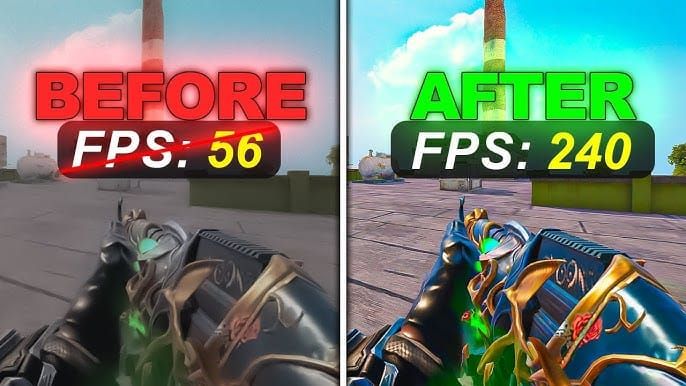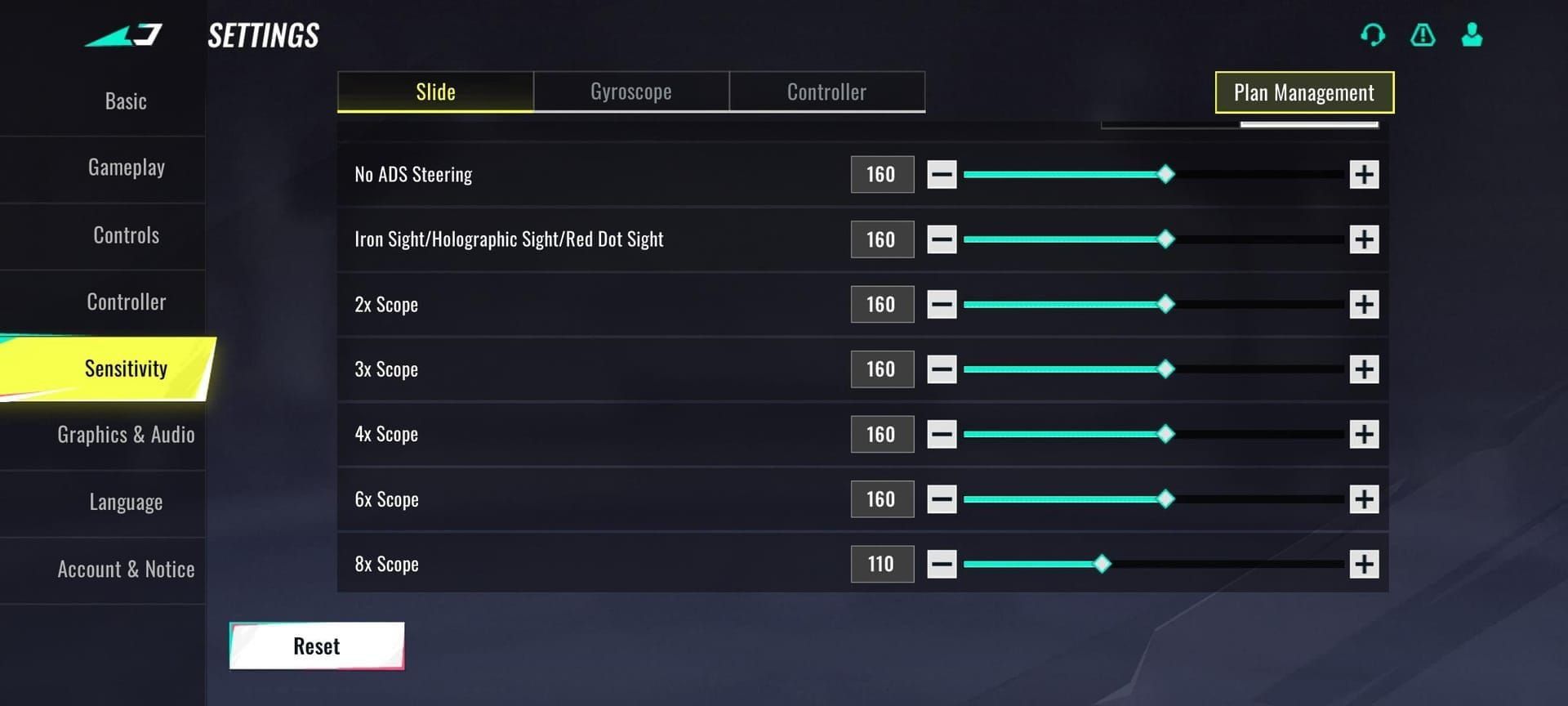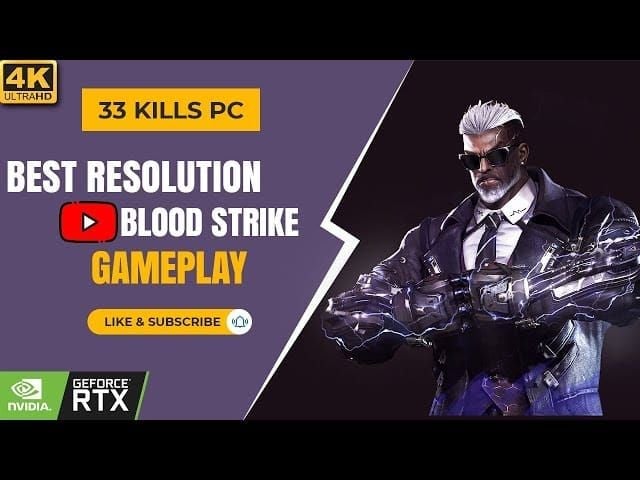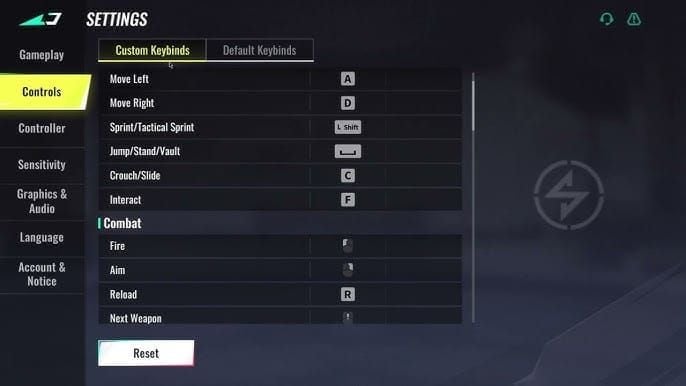Master Blood Strike's optimal settings configuration to achieve maximum FPS, precise sensitivity control, and superior recoil management. This comprehensive guide covers graphics optimization, sensitivity calculation, display settings, and pro-level configurations for competitive advantage in 2025.
Blood Strike Graphics Settings for Maximum FPS
Let's be honest here – Blood Strike isn't the most optimized game out there. But with the right tweaks, you can squeeze every last frame out of your system.
Low vs Medium vs High Quality Comparison

First things first: check if your rig can actually handle what you're throwing at it. Blood Strike needs at least an Intel i3 8300 or AMD Ryzen 5 3100 with 8GB RAM and a GTX 960. That's bare minimum territory. For something more comfortable? You're looking at an Intel i7 7700K or AMD Ryzen 7 1700 with 16GB RAM and a GTX 1070.
Low Settings Configuration: This is where most players should start, honestly. Drop that resolution to 1280x720 – yeah, it looks rough, but you'll cut GPU load by 50%. Texture quality goes to low, shadows get disabled entirely (they're just eye candy anyway), and reflections? Off. Set render distance between 50-70% unless you're planning to snipe from across the map.
Medium Settings Balance: Only attempt 1920x1080 if you've got the recommended hardware. I can't stress this enough – too many players try to push higher settings than their system can handle. Texture quality can bump up to medium if you've got 8192MB VRAM, shadows on low (not off, you need some visual cues), and you should be hitting stable 60+ FPS.
High Settings Requirements: Here's where things get expensive. You need dedicated VRAM of 8192MB minimum, a CPU equivalent to Intel i7 7700K or better, and 16GB RAM for proper texture loading. Target should be 60-120 FPS – anything less and you're handicapping yourself.
For reliable Blood Strike gold recharge, BitTopup offers competitive pricing and instant delivery with secure payment system and 24/7 customer support.
Platform-Specific Optimizations
PC Optimization Process: Update those graphics drivers monthly – I see too many players running drivers from six months ago wondering why performance is terrible. Enable Windows Game Mode (it actually helps in this case), close background applications through Task Manager, and set the game priority to High.
Pro tip: Install on an SSD if you can. You'll need 30GB of storage, but the load time difference is night and day.
Mobile Device Settings: Disable auto-brightness – it's constantly adjusting and eating resources. Close background apps, switch to performance mode, and keep that device temperature below 40°C. If your phone supports 90Hz or 120Hz, enable it. The difference is immediately noticeable.
Frame Rate Testing Methods
Target 60+ FPS on minimum specs by combining resolution reduction with disabled effects. Systems meeting recommended specifications should achieve 90-120 FPS for optimal sensitivity responsiveness. Anything below 60 and your sensitivity will feel inconsistent.
Optimal Sensitivity Configuration Guide
This is where most players mess up. They copy some streamer's settings and wonder why they can't hit anything.
DPI and In-Game Sensitivity Balance

Lock your sensitivity between 60-80% based on your mouse DPI. This minimizes over-aiming and improves weapon handling – trust me on this one.
DPI Configuration Steps: Set mouse DPI to 800-1600 (I personally use 1200), then configure in-game sensitivity to 50-70%. Test with the SCAR assault rifle for mid-range accuracy – it's the most balanced weapon for testing. Adjust in 5% increments only, and aim for less than 10% variation between attempts. Practice those pull-down patterns for recoil control.
Conversion Process: Start with 70% of your sensitivity from other FPS games. Blood Strike feels different from CS:GO or Valorant, so don't expect a direct translation. Test in aim training scenarios, adjust based on weapon recoil patterns, and verify consistency across different engagement ranges.
Finding Your Perfect Sens
Professional players emphasize sensitivity locking for muscle memory development. Higher FPS directly improves sensitivity responsiveness by reducing input lag – this isn't just theory, it's measurable.
Optimization Checklist: Disable mouse acceleration in Windows (seriously, just do it), use a consistent mouse pad surface, maintain stable FPS above 60, test with your primary weapons, and practice daily for muscle memory retention. No shortcuts here.
Display and Resolution Settings
Best Resolution for Performance

Resolution Recommendations:
1280x720: Maximum FPS on GTX 960 systems (looks rough but performs)
1920x1080: Balanced option for GTX 1070+ hardware
2560x1440: High-end systems only (RTX 3070+)
Refresh Rate: Match your monitor capability (60Hz/144Hz/240Hz)
Refresh Rate Setup: 60Hz is the absolute minimum for competitive play. 144Hz is what I'd recommend for serious players – the difference is substantial. 240Hz is professional level territory and requires high-end hardware. Set your frame rate cap 3-5 FPS below your refresh rate to avoid stuttering.
Recoil Control Settings and Techniques
Weapon-Specific Configurations

Stable frame rates enable predictable recoil patterns. The SCAR assault rifle benefits from locked sensitivity at 70% with high FPS for accurate burst control. This isn't just preference – it's physics.
Recoil Management Setup: Achieve stable 60+ FPS first – everything else is secondary. Lock your sensitivity settings (stop tweaking them every match), practice pull-down patterns in training, learn weapon-specific recoil directions, and use ADS for reduced recoil intensity.
Weapon Categories:
Assault Rifles: Medium sensitivity, controlled bursts work best
SMGs: Higher sensitivity for close-range tracking
Sniper Rifles: Lower sensitivity for precision shots
For consistent performance, consider Blood Strike gold buy online through BitTopup's reliable platform with instant delivery and competitive rates.
Practice Routines
Daily Training Schedule: Warm-up for 10 minutes in training mode (don't skip this), spend 20 minutes on pattern practice with your primary weapons, then 15 minutes on moving target tracking practice. Consistency beats intensity here.
Audio Settings for Competitive Advantage
Sound Quality vs Performance
Audio Configuration: Quality on medium for balance, master volume at 80-90%, effects volume at 100% for footsteps (this is crucial), music volume at 20% or disabled entirely, and voice chat with separate volume control.
Headphone Optimization: Use stereo headphones for accurate positioning – virtual surround processing actually hurts more than it helps. Set Windows to stereo output and test directional accuracy in training mode.
Control and Keybind Optimization
Essential Keybind Layouts

Primary Keybinds: Movement on WASD (obviously), jump on spacebar or mouse wheel, crouch on Ctrl or C, ADS on right mouse button, and quick ADS on mouse side button for sub-0.2s activation.
Advanced Bindings: Grenade on G or mouse button, ability on Q or E key, ping on middle mouse button, and inventory on Tab key. Keep it simple – complex binds lead to mistakes under pressure.
Mobile vs PC Controls
Mobile Optimization: Customize HUD layout for thumb reach, adjust button size for accuracy, enable gyroscope for fine aiming, and use claw grip for advanced techniques.
PC Advantages: Raw mouse input for precision, multiple keybind options, higher refresh rate support, and customizable DPI switching. There's a reason pros play on PC.
Pro Player Settings Analysis
Top Player Configurations
Common Pro Settings: Resolution at 1920x1080 or 1280x720, graphics on low to medium, FPS target of 144+ consistently, sensitivity locked and practiced daily, and audio maximized for competitive advantage.
Tournament Standards: FPS minimum of 60 sustained, input lag under 20ms total system latency, display at 144Hz minimum refresh rate, and network under 50ms ping requirement.
Performance Monitoring and Testing
FPS Measurement Tools
Built-in Tools: Steam FPS counter overlay, NVIDIA GeForce Experience metrics, AMD Radeon metrics, and in-game FPS display options.
Performance Metrics: Average FPS targeting 60+ minimum, 1% low FPS measuring worst-case performance, frame time consistency under 5ms variation, and temperature stability under 80°C sustained.
Latency Testing
Latency Reduction: Use wired mouse and keyboard, enable game mode on your monitor, disable Windows fullscreen optimizations, set game to exclusive fullscreen, and minimize background processes.
Troubleshooting Common Issues
Lag and Stuttering Fixes
Driver-Related Issues: Update graphics drivers monthly – set a calendar reminder. Clean install if you're experiencing crashes, use DDU for complete driver removal, and verify game file integrity through Steam.
System Optimization: Close unnecessary background applications (Discord overlay can be a culprit), disable Windows Game DVR, set game to high priority in Task Manager, verify adequate cooling, select servers with under 50ms ping, and use wired connection when possible.
Hardware Compatibility
Minimum Spec Verification: CPU needs to be Intel i3 8300 or AMD Ryzen 5 3100 minimum, RAM should be 8GB minimum but 16GB recommended, GPU requires GTX 960 or RX 5600 minimum, and storage needs 30GB free space on SSD preferred.
Upgrade Priorities: GPU gives the biggest FPS impact (GTX 1070+ recommended), RAM should be 16GB for stable performance, and storage on SSD reduces loading times significantly.
FAQ
What are the best graphics settings for maximum FPS in Blood Strike? Set resolution to 1280x720, disable shadows and reflections, reduce texture quality to low/medium, and decrease render distance to 50-70%. This configuration can boost FPS by 40-50% on low-spec systems.
How do I find the perfect sensitivity for Blood Strike? Start with 70% in-game sensitivity at 800-1600 mouse DPI. Test with the SCAR rifle in training mode, firing 10-round bursts at 50m targets. Adjust in 5% increments until deviation stays under 10%.
What system requirements do I need for stable 60+ FPS? Minimum: Intel i3 8300/AMD Ryzen 5 3100, 8GB RAM, GTX 960/RX 5600, 30GB SSD storage. Recommended: Intel i7 7700K/AMD Ryzen 7 1700, 16GB RAM, GTX 1070/RX 7600 for 90-120 FPS.
How can I reduce recoil in Blood Strike? Maintain stable 60+ FPS first, then lock sensitivity at 60-80% based on your DPI. Practice pull-down patterns in training mode with your primary weapons and use ADS for reduced recoil intensity.
Why am I experiencing FPS drops and how do I fix them? Update graphics drivers monthly, close unnecessary apps via Task Manager, enable Windows Game Mode, and monitor temperatures to stay below 80°C during gameplay.
What audio settings give me a competitive advantage? Set effects volume to 100% for footsteps, reduce music to 20%, use stereo headphones without virtual surround, and configure Windows audio priority to High for the game.

